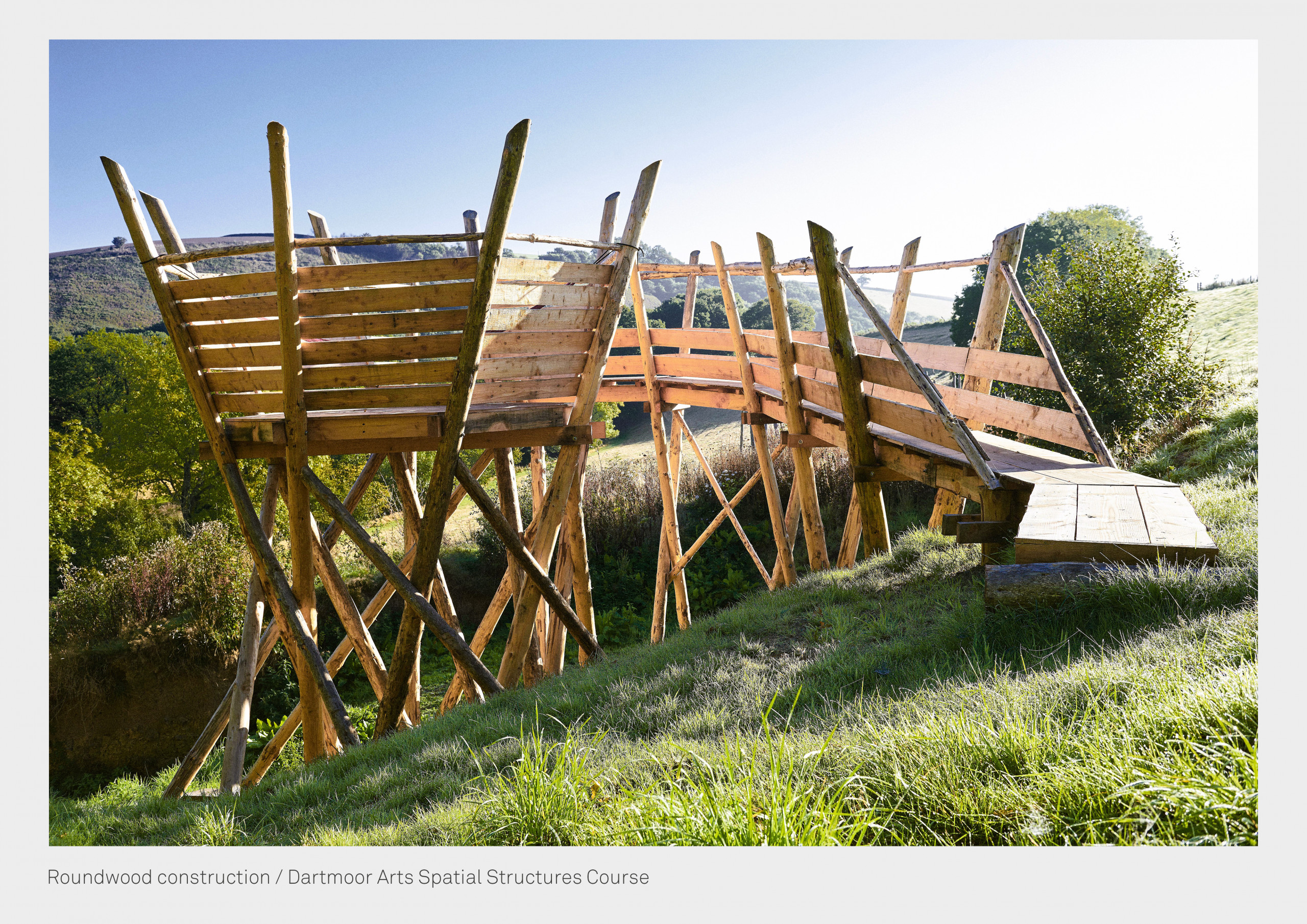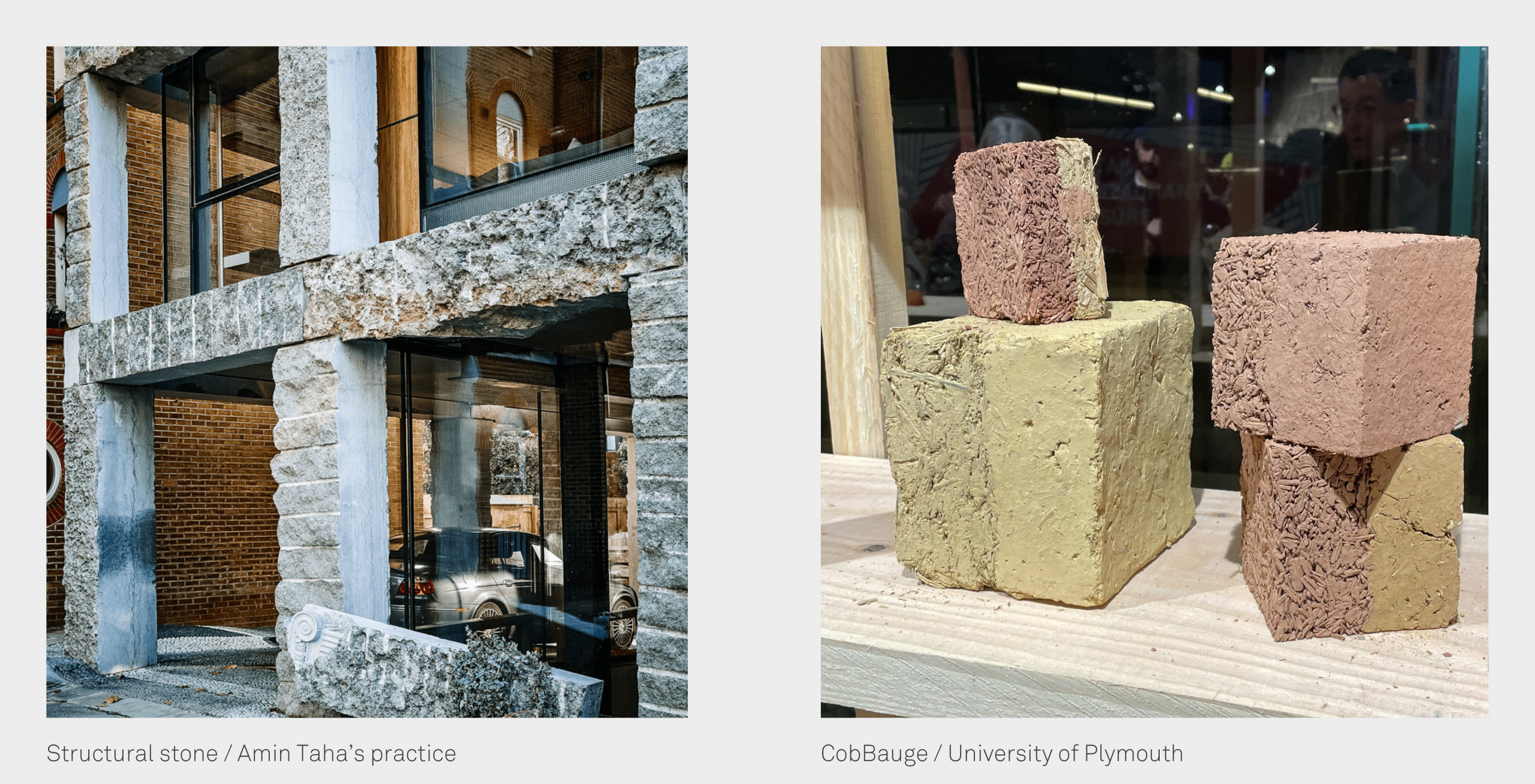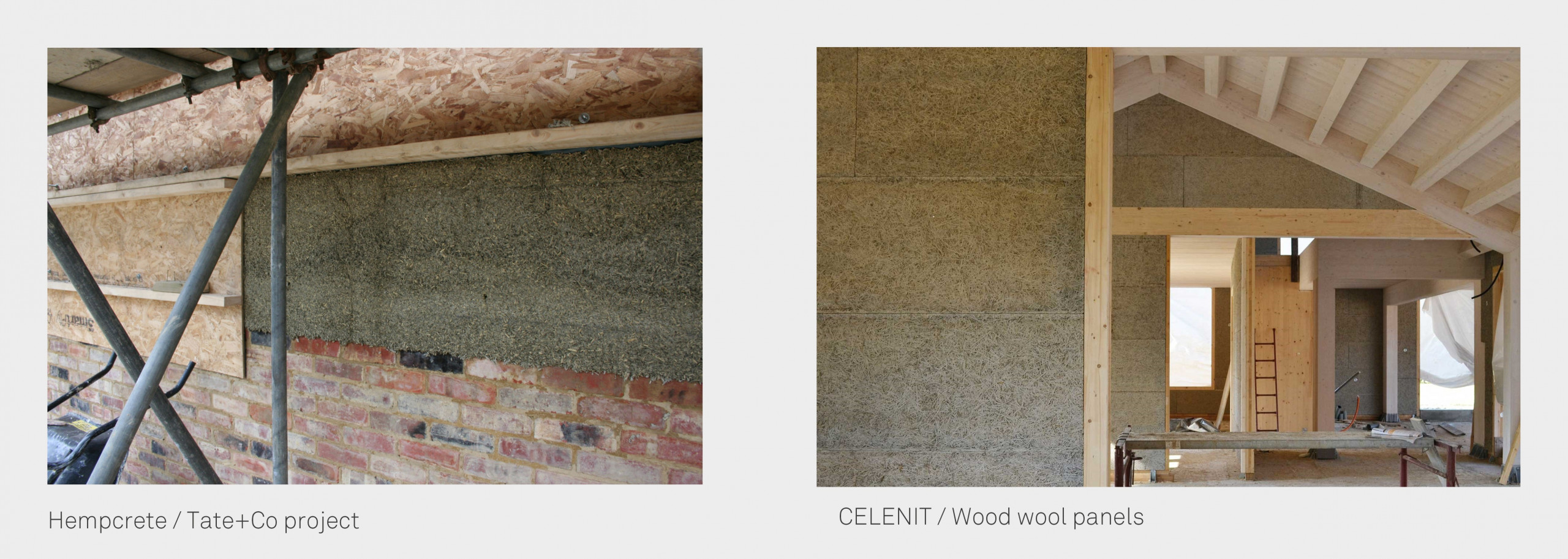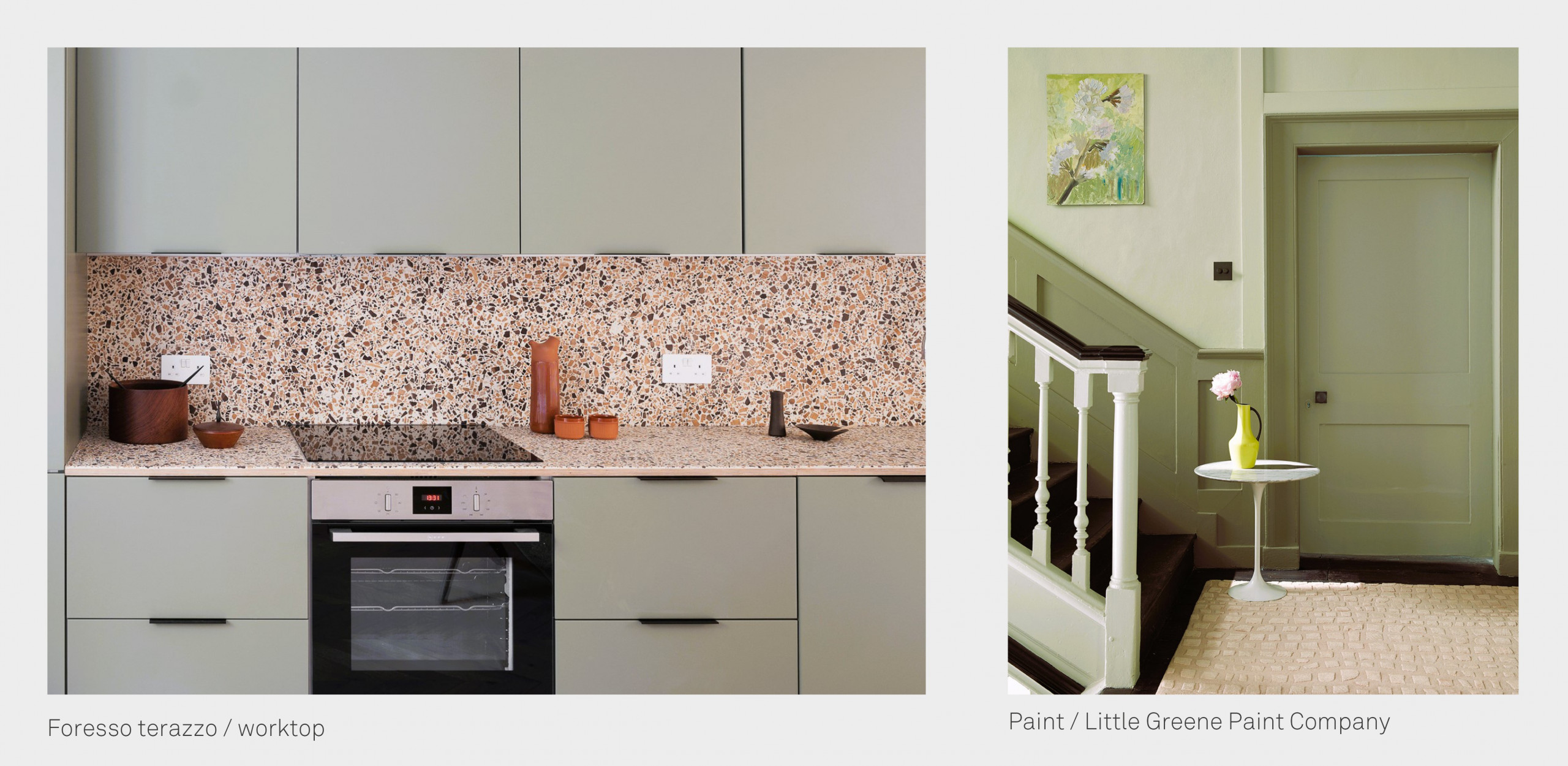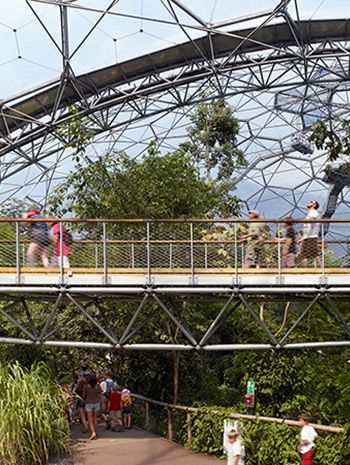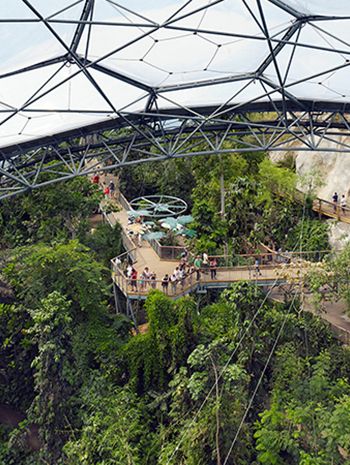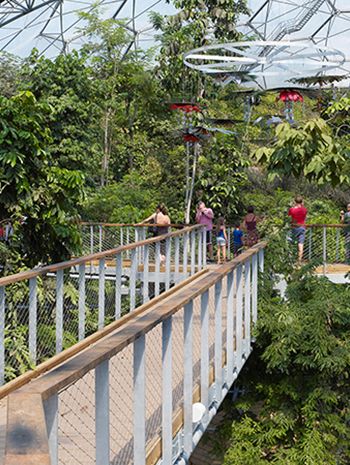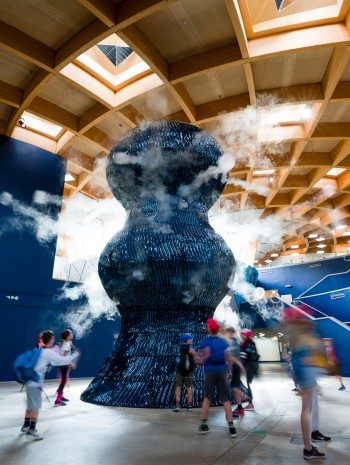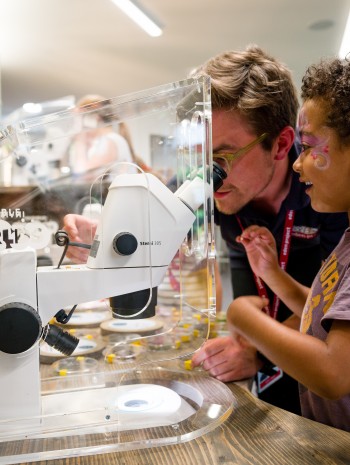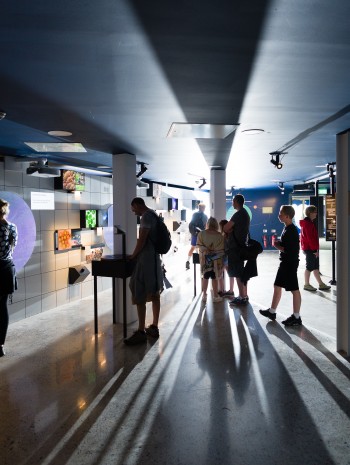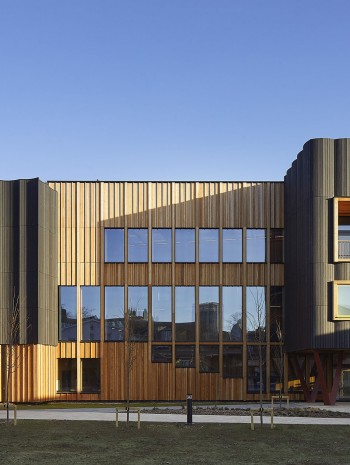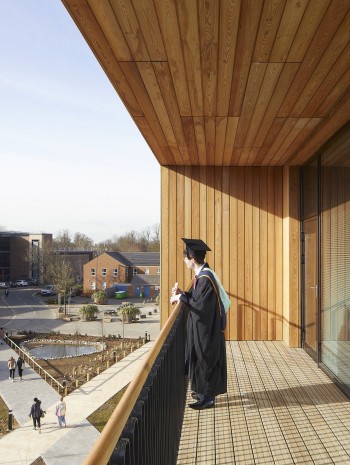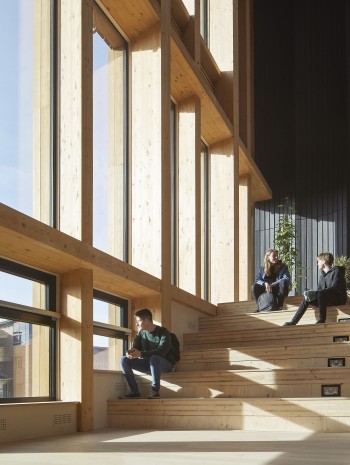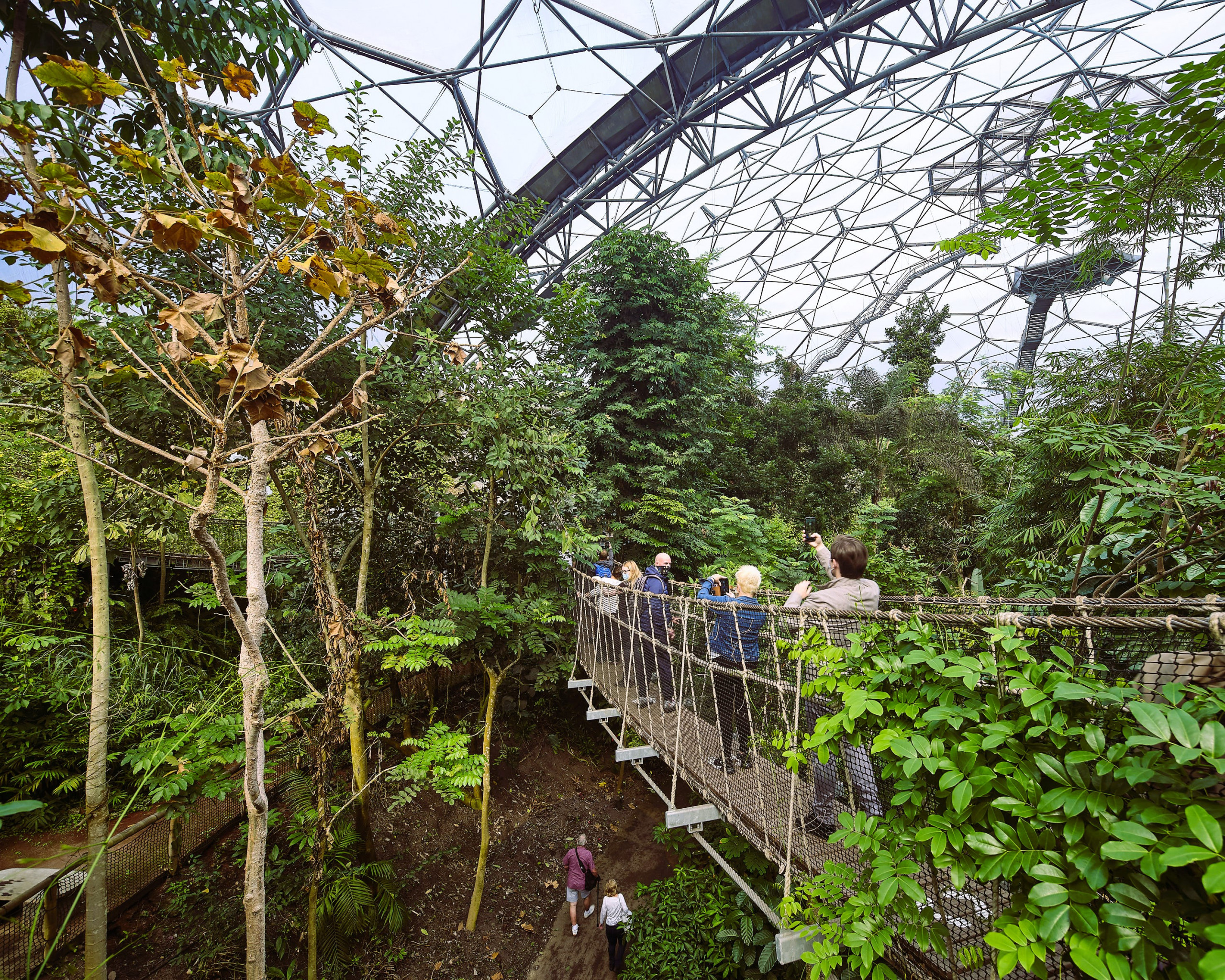
As awareness grows regarding the need for sustainable alternatives, the construction sector is witnessing a surge in interest in the adoption of low carbon materials that promises to redefine the way we build. As a practice, we are interested in materials which celebrate their origins and construction techniques that directly align with the materials employed, harnessing their inherent properties rather than forcing them to mimic outdated construction methods.
In this article, I will delve into a range of our favourite sustainable materials, from substructure to superstructure.
Timber – Roundwood construction
Sourced from responsibly managed forests, timber feels like the most obvious choice of a renewable resource, sequestering carbon during its growth. When used in construction, timber structures act as carbon sinks, offsetting emissions associated with more carbon-intensive materials.
Roundwood construction, a method utilising unprocessed timber logs, offers several advantages over other timber construction methods. This approach minimises waste, reduces energy consumption in processing and enhances structural integrity through the natural curvature of the logs. The resulting architecture celebrates the original, organic form of the material. A really good resource for this is the work of Ben Law and his book ‘Roundwood Timber Framing’.
Thermally treated timber
Thermally treated timber undergoes a process of heat treatment to enhance its durability, stability and resistance to decay. This process involves subjecting the wood to high temperatures in a controlled environment, altering its chemical composition. The benefits include increased dimensional stability, reduced moisture absorption, enhanced resistance to fungi and insects and improved sustainability due to reduced chemical treatments.
Structural stone
Structural stone, using natural granite, marble and limestone, offers sustainable construction with minimal environmental impact and enhanced durability compared to concrete. Its local sourcing supports economies and reduces carbon emissions. Additionally, the thermal mass properties of stone contribute to improved energy efficiency, reducing the whole life carbon of a building.
A more in-depth explanation of the use of structural stone can be found in Webb Yate’s video The Sustainability of Stone.
CobBauge
CobBauge is a low carbon building technique that blends traditional cob construction with modern engineering principles. Originating from France, it utilises cob, a mixture of earth, sand, and straw, to create load-bearing walls. CobBauge uses a composite wall, with a 300mm-thick structural cob zone and a 300mm-thick insulating zone containing hemp shiv. Built as a monolithic structure, it eliminates the need for secondary insulation, achieving a U-value of 0.26W/m²k, meeting Part L standards.
The CoBauge project is led by the University of Plymouth, with more information to be found here: https://www.plymouth.ac.uk/research/cobbauge.
Hempcrete
Hempcrete, a composite material comprising hemp fibres, lime and water, is gaining recognition for its low embodied carbon and carbon-negative characteristics. Hemp’s rapid growth and carbon sequestration during cultivation contribute to its sustainable profile. The lightweight and insulative properties of hempcrete reduce the need for additional energy consumption in climate control, further enhancing its sustainability.
Wood wool panels
Wood wool boards are a natural alternative to plasterboard. They are panels made from thin wood strands bonded together with a natural adhesive, resulting in textured, porous boards. These boards offer excellent thermal and acoustic insulation properties, providing a breathable surface which regulates humidity levels indoors. They can also be used in conjunction with lime render for external applications.
Further details of wood wool boards can be found here: https://www.mikewye.co.uk/product/savolit-plus-wood-wool-board/
Foresso terazzo
Foresso is a ‘timber terrazzo’, a sheet material used for worktops and furniture. Unlike traditional terrazzo, Foresso uses reclaimed wood chips to create a rich chipped pattern, reducing its carbon impact whilst creating a unique visual appeal. Utilising wood waste from local sawmills and building sites, Foresso minimises landfill disposal. Production, focused on creating circular economies, employs materials sourced within the UK, with an average travel distance of 43 miles. Although not (yet) widely recyclable, Foresso can be returned to the manufactures for re-use and recycling.
Paint
Something which I had never considered before is the sustainability and environmental impact of paint. Wall paint harms the environment due to volatile organic compounds (VOCs) causing air pollution, toxic ingredients like heavy metals and formaldehyde. Production emits greenhouse gases, while improper disposal contaminates soil and water. Less harmful alternatives can, however, be found. Produced by UK based companies such as ‘Little Greene Paint’, their water-based paints carry the industry’s lowest eco-rating and have a VOC content of virtually zero.
I hope you have enjoyed reading about our favourite, sustainable materials. Awareness within architecture and construction is growing rapidly and low carbon, durable and beautiful alternatives to traditional products are becoming increasingly accessible and affordable.
Beth Sprigg
Architectural Assistant

Beth joined Tate+Co in 2022. Since then, she has worked on a range of projects across leisure, hospitality and residential. Working across stages from initial feasibility, to visualizing projects at a later stage.
Beth graduated from Newcastle University in 2022 with a First-class honours degree. Her final project, ‘The Ark of Eternal food’ was awarded the William Bell Memorial prize for the best major project design at Part 1, as well as being nominated for the RIBA Bronze Medal. The project, set in the model mill-town, Saltaire, addressed a range of concepts from the idea of utopia, self-sufficiency to renewable energy and vertical farming. The project was also commended for the Climate Creatives Challenge – a national design competition to communicate the impact of climate change and address the importance of designing for flood resilience.
During her studies, she collaborated on numerous projects and won the NUAS X NAS inter-university architecture competition to design a public park pavilion. Outside of architecture, she has previously worked in film across both the UK and New York. She also enjoys travelling, having converted a campervan to drive to Bosnia in her year out.

